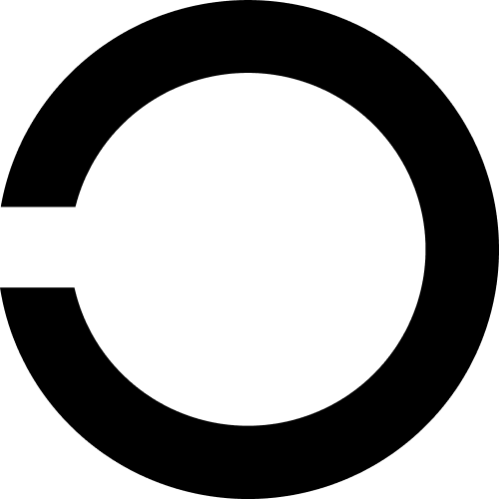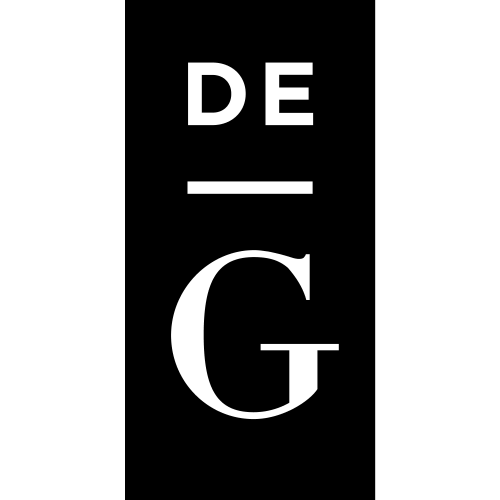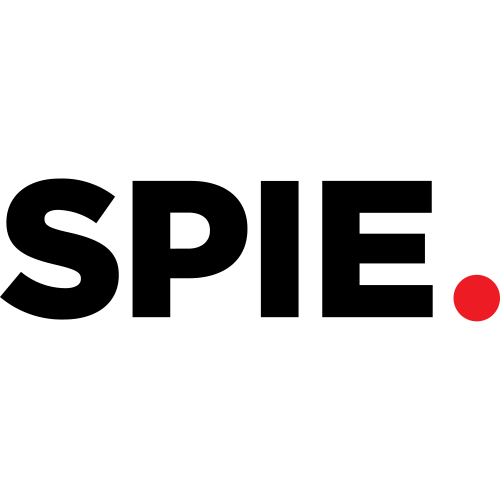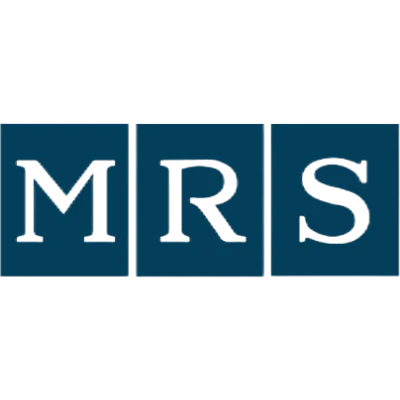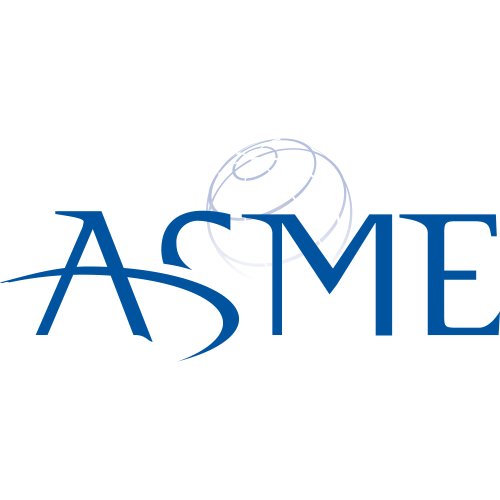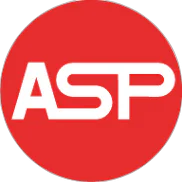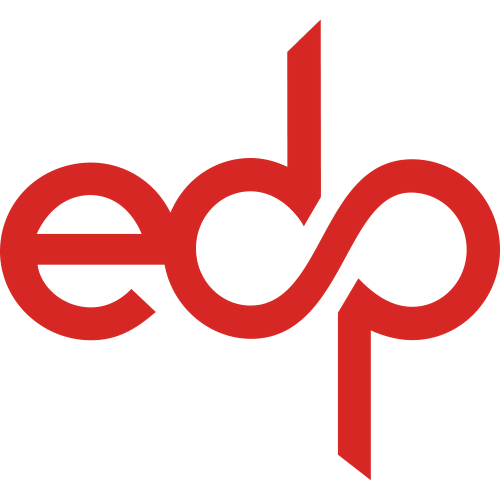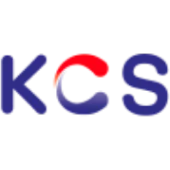Nature Nanotechnology, volume 7, issue 9, pages 577-582
Hybrid passivated colloidal quantum dot solids.
Alexander H. Ip
1
,
Susanna M Thon
1
,
Sjoerd Hoogland
1
,
Oleksandr Voznyy
1
,
David Zhitomirsky
1
,
Ratan Debnath
1
,
Larissa Levina
1
,
Lisa R Rollny
1
,
Graham H. Carey
1
,
Armin Fischer
1
,
Kyle W Kemp
1
,
Illan J Kramer
1
,
Zhijun Ning
1
,
Andre J Labelle
1
,
Kang Wei Chou
2
,
Aram Amassian
2
,
Edward H Sargent
1
1
Department of Electrical and Computer Engineering, University of Toronto, Toronto, Canada
|
Publication type: Journal Article
Publication date: 2012-07-29
Journal:
Nature Nanotechnology
Quartile SCImago
Q1
Quartile WOS
Q1
Impact factor: 38.3
ISSN: 17483387, 17483395
Atomic and Molecular Physics, and Optics
Condensed Matter Physics
General Materials Science
Electrical and Electronic Engineering
Bioengineering
Biomedical Engineering
Abstract
Colloidal quantum dot (CQD) films allow large-area solution processing and bandgap tuning through the quantum size effect. However, the high ratio of surface area to volume makes CQD films prone to high trap state densities if surfaces are imperfectly passivated, promoting recombination of charge carriers that is detrimental to device performance. Recent advances have replaced the long insulating ligands that enable colloidal stability following synthesis with shorter organic linkers or halide anions, leading to improved passivation and higher packing densities. Although this substitution has been performed using solid-state ligand exchange, a solution-based approach is preferable because it enables increased control over the balance of charges on the surface of the quantum dot, which is essential for eliminating midgap trap states. Furthermore, the solution-based approach leverages recent progress in metal:chalcogen chemistry in the liquid phase. Here, we quantify the density of midgap trap states in CQD solids and show that the performance of CQD-based photovoltaics is now limited by electron-hole recombination due to these states. Next, using density functional theory and optoelectronic device modelling, we show that to improve this performance it is essential to bind a suitable ligand to each potential trap site on the surface of the quantum dot. We then develop a robust hybrid passivation scheme that involves introducing halide anions during the end stages of the synthesis process, which can passivate trap sites that are inaccessible to much larger organic ligands. An organic crosslinking strategy is then used to form the film. Finally, we use our hybrid passivated CQD solid to fabricate a solar cell with a certified efficiency of 7.0%, which is a record for a CQD photovoltaic device.
Top-30
Citations by journals
|
10
20
30
40
50
60
|
|
|
Journal of Physical Chemistry C
54 publications, 4.98%
|
|
|
Advanced Materials
49 publications, 4.52%
|
|
|
Nano Letters
47 publications, 4.33%
|
|
|
ACS Nano
46 publications, 4.24%
|
|
|
ACS applied materials & interfaces
46 publications, 4.24%
|
|
|
Chemistry of Materials
36 publications, 3.32%
|
|
|
Nanoscale
33 publications, 3.04%
|
|
|
Journal of Physical Chemistry Letters
32 publications, 2.95%
|
|
|
Journal of Materials Chemistry A
30 publications, 2.76%
|
|
|
Journal of the American Chemical Society
26 publications, 2.4%
|
|
|
Physical Chemistry Chemical Physics
26 publications, 2.4%
|
|
|
Advanced Functional Materials
24 publications, 2.21%
|
|
|
Applied Physics Letters
21 publications, 1.94%
|
|
|
Advanced Energy Materials
17 publications, 1.57%
|
|
|
Energy and Environmental Science
17 publications, 1.57%
|
|
|
Nature Communications
16 publications, 1.47%
|
|
|
Solar Energy Materials and Solar Cells
16 publications, 1.47%
|
|
|
ACS Energy Letters
15 publications, 1.38%
|
|
|
Nano Energy
14 publications, 1.29%
|
|
|
Scientific Reports
13 publications, 1.2%
|
|
|
ACS Applied Nano Materials
13 publications, 1.2%
|
|
|
RSC Advances
12 publications, 1.11%
|
|
|
Journal of Materials Chemistry C
12 publications, 1.11%
|
|
|
Small
11 publications, 1.01%
|
|
|
Chemical Reviews
10 publications, 0.92%
|
|
|
Advanced Optical Materials
9 publications, 0.83%
|
|
|
Nanomaterials
8 publications, 0.74%
|
|
|
Solar Energy
8 publications, 0.74%
|
|
|
Journal of Materials Science: Materials in Electronics
7 publications, 0.65%
|
|
|
10
20
30
40
50
60
|
Citations by publishers
|
50
100
150
200
250
300
350
400
|
|
|
American Chemical Society (ACS)
357 publications, 32.9%
|
|
|
Wiley
177 publications, 16.31%
|
|
|
Royal Society of Chemistry (RSC)
159 publications, 14.65%
|
|
|
Elsevier
130 publications, 11.98%
|
|
|
Springer Nature
88 publications, 8.11%
|
|
|
American Institute of Physics (AIP)
34 publications, 3.13%
|
|
|
Multidisciplinary Digital Publishing Institute (MDPI)
21 publications, 1.94%
|
|
|
IOP Publishing
17 publications, 1.57%
|
|
|
IEEE
10 publications, 0.92%
|
|
|
Optical Society of America
8 publications, 0.74%
|
|
|
Hindawi Limited
6 publications, 0.55%
|
|
|
American Association for the Advancement of Science (AAAS)
5 publications, 0.46%
|
|
|
American Physical Society (APS)
4 publications, 0.37%
|
|
|
Walter de Gruyter
4 publications, 0.37%
|
|
|
SPIE
3 publications, 0.28%
|
|
|
The Electrochemical Society
3 publications, 0.28%
|
|
|
World Scientific
2 publications, 0.18%
|
|
|
Materials Research Society
2 publications, 0.18%
|
|
|
Cambridge University Press
2 publications, 0.18%
|
|
|
Japan Society of Applied Physics
2 publications, 0.18%
|
|
|
Pleiades Publishing
2 publications, 0.18%
|
|
|
Taylor & Francis
2 publications, 0.18%
|
|
|
ASME
1 publication, 0.09%
|
|
|
American Scientific Publishers
1 publication, 0.09%
|
|
|
EDP Sciences
1 publication, 0.09%
|
|
|
Uspekhi Fizicheskikh Nauk Journal
1 publication, 0.09%
|
|
|
Science in China Press
1 publication, 0.09%
|
|
|
Korean Chemical Society
1 publication, 0.09%
|
|
|
King Saud University
1 publication, 0.09%
|
|
|
50
100
150
200
250
300
350
400
|
- We do not take into account publications without a DOI.
- Statistics recalculated only for publications connected to researchers, organizations and labs registered on the platform.
- Statistics recalculated weekly.
{"yearsCitations":{"type":"bar","data":{"show":true,"labels":[2012,2013,2014,2015,2016,2017,2018,2019,2020,2021,2022,2023,2024],"ids":[0,0,0,0,0,0,0,0,0,0,0,0,0],"codes":[0,0,0,0,0,0,0,0,0,0,0,0,0],"imageUrls":["","","","","","","","","","","","",""],"datasets":[{"label":"Citations number","data":[11,122,154,136,112,99,98,82,85,69,48,47,21],"backgroundColor":["#3B82F6","#3B82F6","#3B82F6","#3B82F6","#3B82F6","#3B82F6","#3B82F6","#3B82F6","#3B82F6","#3B82F6","#3B82F6","#3B82F6","#3B82F6"],"percentage":["1.01","11.24","14.19","12.53","10.32","9.12","9.03","7.56","7.83","6.36","4.42","4.33","1.94"],"barThickness":null}]},"options":{"indexAxis":"x","maintainAspectRatio":true,"scales":{"y":{"ticks":{"precision":0,"autoSkip":false,"font":{"family":"Montserrat"},"color":"#000000"},"stacked":false},"x":{"ticks":{"stepSize":1,"precision":0,"font":{"family":"Montserrat"},"color":"#000000"},"stacked":false}},"plugins":{"legend":{"position":"top","labels":{"font":{"family":"Montserrat"},"color":"#000000"}},"title":{"display":true,"text":"Citations per year","font":{"size":24,"family":"Montserrat","weight":600},"color":"#000000"}}}},"journals":{"type":"bar","data":{"show":true,"labels":["Journal of Physical Chemistry C","Advanced Materials","Nano Letters","ACS Nano","ACS applied materials & interfaces","Chemistry of Materials","Nanoscale","Journal of Physical Chemistry Letters","Journal of Materials Chemistry A","Journal of the American Chemical Society","Physical Chemistry Chemical Physics","Advanced Functional Materials","Applied Physics Letters","Advanced Energy Materials","Energy and Environmental Science","Nature Communications","Solar Energy Materials and Solar Cells","ACS Energy Letters","Nano Energy","Scientific Reports","ACS Applied Nano Materials","RSC Advances","Journal of Materials Chemistry C","Small","Chemical Reviews","Advanced Optical Materials","Nanomaterials","Solar Energy","Journal of Materials Science: Materials in Electronics"],"ids":[8859,25159,10312,8724,1458,6428,228,21963,14919,4813,1773,7715,4202,22475,10138,3231,5546,9022,23236,13767,1600,3100,3848,9872,13718,2077,10051,22255,20208],"codes":[0,0,0,0,0,0,0,0,0,0,0,0,0,0,0,0,0,0,0,0,0,0,0,0,0,0,0,0,0],"imageUrls":["\/storage\/images\/resized\/iLiQsFqFaSEx6chlGQ5fbAwF6VYU3WWa08hkss0g_medium.webp","\/storage\/images\/resized\/bRyGpdm98BkAUYiK1YFNpl5Z7hPu6Gd87gbIeuG3_medium.webp","\/storage\/images\/resized\/iLiQsFqFaSEx6chlGQ5fbAwF6VYU3WWa08hkss0g_medium.webp","\/storage\/images\/resized\/iLiQsFqFaSEx6chlGQ5fbAwF6VYU3WWa08hkss0g_medium.webp","\/storage\/images\/resized\/iLiQsFqFaSEx6chlGQ5fbAwF6VYU3WWa08hkss0g_medium.webp","\/storage\/images\/resized\/iLiQsFqFaSEx6chlGQ5fbAwF6VYU3WWa08hkss0g_medium.webp","\/storage\/images\/resized\/leiAYcRDGTSl5B1eCnwpSGqmDEUEfDPPoYisFGhT_medium.webp","\/storage\/images\/resized\/iLiQsFqFaSEx6chlGQ5fbAwF6VYU3WWa08hkss0g_medium.webp","\/storage\/images\/resized\/leiAYcRDGTSl5B1eCnwpSGqmDEUEfDPPoYisFGhT_medium.webp","\/storage\/images\/resized\/iLiQsFqFaSEx6chlGQ5fbAwF6VYU3WWa08hkss0g_medium.webp","\/storage\/images\/resized\/leiAYcRDGTSl5B1eCnwpSGqmDEUEfDPPoYisFGhT_medium.webp","\/storage\/images\/resized\/bRyGpdm98BkAUYiK1YFNpl5Z7hPu6Gd87gbIeuG3_medium.webp","\/storage\/images\/resized\/ARM4e6URKRsbRZvIF0vFis9DjxGloBjnBYJXbHmZ_medium.webp","\/storage\/images\/resized\/bRyGpdm98BkAUYiK1YFNpl5Z7hPu6Gd87gbIeuG3_medium.webp","\/storage\/images\/resized\/leiAYcRDGTSl5B1eCnwpSGqmDEUEfDPPoYisFGhT_medium.webp","\/storage\/images\/resized\/voXLqlsvTwv5p3iMQ8Dhs95nqB4AXOG7Taj7G4ra_medium.webp","\/storage\/images\/resized\/GDnYOu1UpMMfMMRV6Aqle4H0YLLsraeD9IP9qScG_medium.webp","\/storage\/images\/resized\/iLiQsFqFaSEx6chlGQ5fbAwF6VYU3WWa08hkss0g_medium.webp","\/storage\/images\/resized\/GDnYOu1UpMMfMMRV6Aqle4H0YLLsraeD9IP9qScG_medium.webp","\/storage\/images\/resized\/voXLqlsvTwv5p3iMQ8Dhs95nqB4AXOG7Taj7G4ra_medium.webp","\/storage\/images\/resized\/iLiQsFqFaSEx6chlGQ5fbAwF6VYU3WWa08hkss0g_medium.webp","\/storage\/images\/resized\/leiAYcRDGTSl5B1eCnwpSGqmDEUEfDPPoYisFGhT_medium.webp","\/storage\/images\/resized\/leiAYcRDGTSl5B1eCnwpSGqmDEUEfDPPoYisFGhT_medium.webp","\/storage\/images\/resized\/bRyGpdm98BkAUYiK1YFNpl5Z7hPu6Gd87gbIeuG3_medium.webp","\/storage\/images\/resized\/iLiQsFqFaSEx6chlGQ5fbAwF6VYU3WWa08hkss0g_medium.webp","\/storage\/images\/resized\/bRyGpdm98BkAUYiK1YFNpl5Z7hPu6Gd87gbIeuG3_medium.webp","\/storage\/images\/resized\/MjH1ITP7lMYGxeqUZfkt2BnVLgjkk413jwBV97XX_medium.webp","\/storage\/images\/resized\/GDnYOu1UpMMfMMRV6Aqle4H0YLLsraeD9IP9qScG_medium.webp","\/storage\/images\/resized\/voXLqlsvTwv5p3iMQ8Dhs95nqB4AXOG7Taj7G4ra_medium.webp"],"datasets":[{"label":"","data":[54,49,47,46,46,36,33,32,30,26,26,24,21,17,17,16,16,15,14,13,13,12,12,11,10,9,8,8,7],"backgroundColor":["#3B82F6","#3B82F6","#3B82F6","#3B82F6","#3B82F6","#3B82F6","#3B82F6","#3B82F6","#3B82F6","#3B82F6","#3B82F6","#3B82F6","#3B82F6","#3B82F6","#3B82F6","#3B82F6","#3B82F6","#3B82F6","#3B82F6","#3B82F6","#3B82F6","#3B82F6","#3B82F6","#3B82F6","#3B82F6","#3B82F6","#3B82F6","#3B82F6","#3B82F6"],"percentage":[4.98,4.52,4.33,4.24,4.24,3.32,3.04,2.95,2.76,2.4,2.4,2.21,1.94,1.57,1.57,1.47,1.47,1.38,1.29,1.2,1.2,1.11,1.11,1.01,0.92,0.83,0.74,0.74,0.65],"barThickness":13}]},"options":{"indexAxis":"y","maintainAspectRatio":false,"scales":{"y":{"ticks":{"precision":0,"autoSkip":false,"font":{"family":"Montserrat"},"color":"#000000"},"stacked":false},"x":{"ticks":{"stepSize":null,"precision":0,"font":{"family":"Montserrat"},"color":"#000000"},"stacked":false}},"plugins":{"legend":{"position":"top","labels":{"font":{"family":"Montserrat"},"color":"#000000"}},"title":{"display":true,"text":"Journals","font":{"size":24,"family":"Montserrat","weight":600},"color":"#000000"}}}},"publishers":{"type":"bar","data":{"show":true,"labels":["American Chemical Society (ACS)","Wiley","Royal Society of Chemistry (RSC)","Elsevier","Springer Nature","American Institute of Physics (AIP)","Multidisciplinary Digital Publishing Institute (MDPI)","IOP Publishing","IEEE","Optical Society of America","Hindawi Limited","American Association for the Advancement of Science (AAAS)","American Physical Society (APS)","Walter de Gruyter","SPIE","The Electrochemical Society","World Scientific","Materials Research Society","Cambridge University Press","Japan Society of Applied Physics","Pleiades Publishing","Taylor & Francis","ASME","American Scientific Publishers","EDP Sciences","Uspekhi Fizicheskikh Nauk Journal","Science in China Press","Korean Chemical Society","King Saud University"],"ids":[40,11,123,17,8,250,202,2075,6953,375,6921,189,1539,4,7162,6916,23,6898,1,804,101,18,6977,679,76,6903,6481,6493,171],"codes":[0,0,0,0,0,0,0,0,0,0,0,0,0,0,0,0,0,0,0,0,0,0,0,0,0,0,0,0,0],"imageUrls":["\/storage\/images\/resized\/iLiQsFqFaSEx6chlGQ5fbAwF6VYU3WWa08hkss0g_medium.webp","\/storage\/images\/resized\/bRyGpdm98BkAUYiK1YFNpl5Z7hPu6Gd87gbIeuG3_medium.webp","\/storage\/images\/resized\/leiAYcRDGTSl5B1eCnwpSGqmDEUEfDPPoYisFGhT_medium.webp","\/storage\/images\/resized\/GDnYOu1UpMMfMMRV6Aqle4H0YLLsraeD9IP9qScG_medium.webp","\/storage\/images\/resized\/voXLqlsvTwv5p3iMQ8Dhs95nqB4AXOG7Taj7G4ra_medium.webp","\/storage\/images\/resized\/ARM4e6URKRsbRZvIF0vFis9DjxGloBjnBYJXbHmZ_medium.webp","\/storage\/images\/resized\/MjH1ITP7lMYGxeqUZfkt2BnVLgjkk413jwBV97XX_medium.webp","\/storage\/images\/resized\/LsKy6OnmmmRGcAU6CZgWQvNiP1polbaSLNrN7zqj_medium.webp","\/storage\/images\/resized\/6scCJegesojp2jubwY3uKCzTAmgsaH2GIFlg6Hfk_medium.webp","\/storage\/images\/resized\/bypZPcr6C4twKiQVCUCGc0GF4cH6aUWmpClD3hsH_medium.webp","\/storage\/images\/resized\/hqfzhQAjTGlNSRs6yzFNITgjSMm9Jr2QuotJHIvE_medium.webp","\/storage\/images\/resized\/s10mcsCV4OAUg9O2KrqOquQC0PhyLMI8hUUkuflM_medium.webp","\/storage\/images\/resized\/nrK64iXHTzj43wMrfN1ZoUQ0vanswGzWPN45K3jA_medium.webp","\/storage\/images\/resized\/3SpVxcYL33bOvPq4sHxJLH2NeKNeDloahSUpNiO4_medium.webp","\/storage\/images\/resized\/DBpVkewJngs3BK2gVqHayOcCZf2Czbxddw6ObU26_medium.webp","\/storage\/images\/resized\/s6nfxitVCZUsdJiJZESaAXqdmMJxom8q4Ps6ayL2_medium.webp","\/storage\/images\/resized\/jZQkhOOcY9wrGwZm7XGRwMe8H7fThQu3KamISuun_medium.webp","\/storage\/images\/resized\/uIgdLKrr5j2RcUZqeCI5v4KcXsLbz9m8NVJHai5O_medium.webp","\/storage\/images\/resized\/cF81zWlLdkmYekymGuDcSdvgBGNKaIDoMoeJtHS1_medium.webp","\/storage\/images\/resized\/wFULTOy1QTD7DkRFxasdNYr8tnVZXl2nkWAWWTzz_medium.webp","\/storage\/images\/resized\/oZgeErrVFhuDksyqFURLvYS1wtVSBWczh001igGo_medium.webp","\/storage\/images\/resized\/5YZtvLvkPZuc2JHOaZsjCvGSHFCuC3drUwN3YAc5_medium.webp","\/storage\/images\/resized\/yKbGpvfNleUTiwBfKt4XcIFlZMo3HgWv1KKVqn4g_medium.webp","\/storage\/images\/resized\/3RKsjkHc38X9y2xwqEEGp02jSMcYwvDgfDB3LdnI_medium.webp","\/storage\/images\/resized\/7GcDgL5Sa2zewDk4sRy4fs0GznbYZIsSV9wqMs28_medium.webp","\/storage\/images\/resized\/FwiqB0ziXtO1uDSVpBYJ2sLrjRF4fgUy0rywXJa7_medium.webp","","\/storage\/images\/resized\/IYy5KbQWZ2uxYLvcvjXjlXRDR3xNOFyFK4Kl6043_medium.webp","\/storage\/images\/resized\/9z7b0TQJNgUxZHYXLrTmbnjJn9y5iq56Wxtqb1Lv_medium.webp"],"datasets":[{"label":"","data":[357,177,159,130,88,34,21,17,10,8,6,5,4,4,3,3,2,2,2,2,2,2,1,1,1,1,1,1,1],"backgroundColor":["#3B82F6","#3B82F6","#3B82F6","#3B82F6","#3B82F6","#3B82F6","#3B82F6","#3B82F6","#3B82F6","#3B82F6","#3B82F6","#3B82F6","#3B82F6","#3B82F6","#3B82F6","#3B82F6","#3B82F6","#3B82F6","#3B82F6","#3B82F6","#3B82F6","#3B82F6","#3B82F6","#3B82F6","#3B82F6","#3B82F6","#3B82F6","#3B82F6","#3B82F6"],"percentage":[32.9,16.31,14.65,11.98,8.11,3.13,1.94,1.57,0.92,0.74,0.55,0.46,0.37,0.37,0.28,0.28,0.18,0.18,0.18,0.18,0.18,0.18,0.09,0.09,0.09,0.09,0.09,0.09,0.09],"barThickness":13}]},"options":{"indexAxis":"y","maintainAspectRatio":false,"scales":{"y":{"ticks":{"precision":0,"autoSkip":false,"font":{"family":"Montserrat"},"color":"#000000"},"stacked":false},"x":{"ticks":{"stepSize":null,"precision":0,"font":{"family":"Montserrat"},"color":"#000000"},"stacked":false}},"plugins":{"legend":{"position":"top","labels":{"font":{"family":"Montserrat"},"color":"#000000"}},"title":{"display":true,"text":"Publishers","font":{"size":24,"family":"Montserrat","weight":600},"color":"#000000"}}}},"yearsCitationsQuartiles":{"type":"bar","data":{"show":true,"labels":[2012,2013,2014,2015,2016,2017,2018,2019,2020,2021,2022,2023,2024],"ids":[],"codes":[],"imageUrls":[],"datasets":[{"label":"Q4","backgroundColor":"rgb(221,90,78)","data":[0,0,0,1,1,0,0,1,0,0,0,0,0],"percentage":["0","0","0","0.09","0.09","0","0","0.09","0","0","0","0","0"]},{"label":"Q3","backgroundColor":"rgb(251, 163,83)","data":[0,0,0,0,3,1,4,1,0,1,0,5,0],"percentage":["0","0","0","0","0.28","0.09","0.37","0.09","0","0.09","0","0.46","0"]},{"label":"Q2","backgroundColor":"rgb(232, 213, 89)","data":[0,5,19,9,13,7,9,12,11,11,8,8,0],"percentage":["0","0.46","1.75","0.83","1.2","0.65","0.83","1.11","1.01","1.01","0.74","0.74","0"]},{"label":"Q1","backgroundColor":"rgb(164, 207, 99)","data":[10,109,127,119,87,84,76,62,68,51,35,27,17],"percentage":["0.92","10.05","11.71","10.97","8.02","7.74","7","5.71","6.27","4.7","3.23","2.49","1.57"]},{"label":"Quartile not defined","backgroundColor":"#E5E7EB","data":[1,8,8,7,8,7,9,6,6,6,5,7,4],"percentage":["0.09","0.74","0.74","0.65","0.74","0.65","0.83","0.55","0.55","0.55","0.46","0.65","0.37"]}]},"options":{"indexAxis":"x","maintainAspectRatio":true,"scales":{"y":{"ticks":{"precision":0,"autoSkip":false,"font":{"family":"Montserrat"},"color":"#000000"},"stacked":true},"x":{"ticks":{"stepSize":1,"precision":0,"font":{"family":"Montserrat"},"color":"#000000"},"stacked":true}},"plugins":{"legend":{"position":"top","labels":{"font":{"family":"Montserrat"},"color":"#000000"}},"title":{"display":true,"text":"Citations quartiles by SCImago per year","font":{"size":24,"family":"Montserrat","weight":600},"color":"#000000"}}}},"yearsCitationsQuartilesWs":{"type":"bar","data":{"show":true,"labels":[2012,2013,2014,2015,2016,2017,2018,2019,2020,2021,2022,2023,2024],"ids":[],"codes":[],"imageUrls":[],"datasets":[{"label":"Q4","backgroundColor":"rgb(221,90,78)","data":[0,1,0,1,1,0,1,1,0,0,1,2,0],"percentage":["0","0.09","0","0.09","0.09","0","0.09","0.09","0","0","0.09","0.18","0"]},{"label":"Q3","backgroundColor":"rgb(251, 163,83)","data":[0,1,2,4,8,4,8,4,3,3,4,6,0],"percentage":["0","0.09","0.18","0.37","0.74","0.37","0.74","0.37","0.28","0.28","0.37","0.55","0"]},{"label":"Q2","backgroundColor":"rgb(232, 213, 89)","data":[1,32,49,29,23,21,18,22,25,18,11,9,2],"percentage":["0.09","2.95","4.52","2.67","2.12","1.94","1.66","2.03","2.3","1.66","1.01","0.83","0.18"]},{"label":"Q1","backgroundColor":"rgb(164, 207, 99)","data":[8,80,93,93,71,67,60,46,50,39,29,22,15],"percentage":["0.74","7.37","8.57","8.57","6.54","6.18","5.53","4.24","4.61","3.59","2.67","2.03","1.38"]},{"label":"Quartile not defined","backgroundColor":"#E5E7EB","data":[2,8,10,9,9,7,11,9,7,9,3,8,4],"percentage":["0.18","0.74","0.92","0.83","0.83","0.65","1.01","0.83","0.65","0.83","0.28","0.74","0.37"]}]},"options":{"indexAxis":"x","maintainAspectRatio":true,"scales":{"y":{"ticks":{"precision":0,"autoSkip":false,"font":{"family":"Montserrat"},"color":"#000000"},"stacked":true},"x":{"ticks":{"stepSize":1,"precision":0,"font":{"family":"Montserrat"},"color":"#000000"},"stacked":true}},"plugins":{"legend":{"position":"top","labels":{"font":{"family":"Montserrat"},"color":"#000000"}},"title":{"display":true,"text":"Citations quartiles by WoS per year","font":{"size":24,"family":"Montserrat","weight":600},"color":"#000000"}}}}}
Are you a researcher?
Create a profile to get free access to personal recommendations for colleagues and new articles.
Metrics
Cite this
GOST |
RIS |
BibTex |
MLA
Cite this
GOST
Copy
Ip A. H. et al. Hybrid passivated colloidal quantum dot solids. // Nature Nanotechnology. 2012. Vol. 7. No. 9. pp. 577-582.
GOST all authors (up to 50)
Copy
Ip A. H., Thon S. M., Hoogland S., Voznyy O., Zhitomirsky D., Debnath R., Levina L., Rollny L. R., Carey G. H., Fischer A., Kemp K. W., Kramer I. J., Ning Z., Labelle A. J., Chou K. W., Amassian A., Sargent E. H. Hybrid passivated colloidal quantum dot solids. // Nature Nanotechnology. 2012. Vol. 7. No. 9. pp. 577-582.
Cite this
RIS
Copy
TY - JOUR
DO - 10.1038/nnano.2012.127
UR - https://doi.org/10.1038/nnano.2012.127
TI - Hybrid passivated colloidal quantum dot solids.
T2 - Nature Nanotechnology
AU - Ip, Alexander H.
AU - Thon, Susanna M
AU - Hoogland, Sjoerd
AU - Voznyy, Oleksandr
AU - Zhitomirsky, David
AU - Debnath, Ratan
AU - Levina, Larissa
AU - Rollny, Lisa R
AU - Carey, Graham H.
AU - Fischer, Armin
AU - Kemp, Kyle W
AU - Kramer, Illan J
AU - Ning, Zhijun
AU - Labelle, Andre J
AU - Chou, Kang Wei
AU - Amassian, Aram
AU - Sargent, Edward H
PY - 2012
DA - 2012/07/29 00:00:00
PB - Springer Nature
SP - 577-582
IS - 9
VL - 7
SN - 1748-3387
SN - 1748-3395
ER -
Cite this
BibTex
Copy
@article{2012_Ip,
author = {Alexander H. Ip and Susanna M Thon and Sjoerd Hoogland and Oleksandr Voznyy and David Zhitomirsky and Ratan Debnath and Larissa Levina and Lisa R Rollny and Graham H. Carey and Armin Fischer and Kyle W Kemp and Illan J Kramer and Zhijun Ning and Andre J Labelle and Kang Wei Chou and Aram Amassian and Edward H Sargent},
title = {Hybrid passivated colloidal quantum dot solids.},
journal = {Nature Nanotechnology},
year = {2012},
volume = {7},
publisher = {Springer Nature},
month = {jul},
url = {https://doi.org/10.1038/nnano.2012.127},
number = {9},
pages = {577--582},
doi = {10.1038/nnano.2012.127}
}
Cite this
MLA
Copy
Ip, Alexander H., et al. “Hybrid passivated colloidal quantum dot solids..” Nature Nanotechnology, vol. 7, no. 9, Jul. 2012, pp. 577-582. https://doi.org/10.1038/nnano.2012.127.










